[ad_1]
When most individuals take into consideration transportable navy bridges they have an inclination to imagine the Bailey Bridge was the primary, however this is able to be improper, Charles Edward Inglis designed the primary dry hole prefabricated navy bridge in service with any Military anyplace on the planet.
Though various Inventory Spans have been launched earlier, they have been utilized in building (non-equipment) bridging somewhat than as a self-contained transportable bridge.
Charles Edward Inglis
Charles Edward Inglis (pronounced Ingles) was born in July 1875 to Dr Alexander Inglis and Florence Inglis (nee Feeney).
After profitable a scholarship to Kings School Cambridge, learning each arithmetic and engineering he left academia to spend time as a bridge design engineer he re-entered educational life to turn into the primary Fellow in Mechanical Sciences at King’s School in 1908.
Within the early pre-war interval, Charles Inglis was concerned with the Royal Engineer part of the College Officer Coaching Corps and began the preliminary design work on a transportable infantry bridge.
With the outbreak of warfare, he volunteered for service and was commissioned into the Royal Engineers and appointed to an teacher publish on the Faculty of Army Engineering in Chatham.
By 1916 he was accountable for the Corps bridge design and procurement part, persevering with work on various totally different bridge designs.
After the warfare, he returned to Cambridge College as a professor of Mechanism and Utilized Mechanics and in 1919, was awarded an OBE.
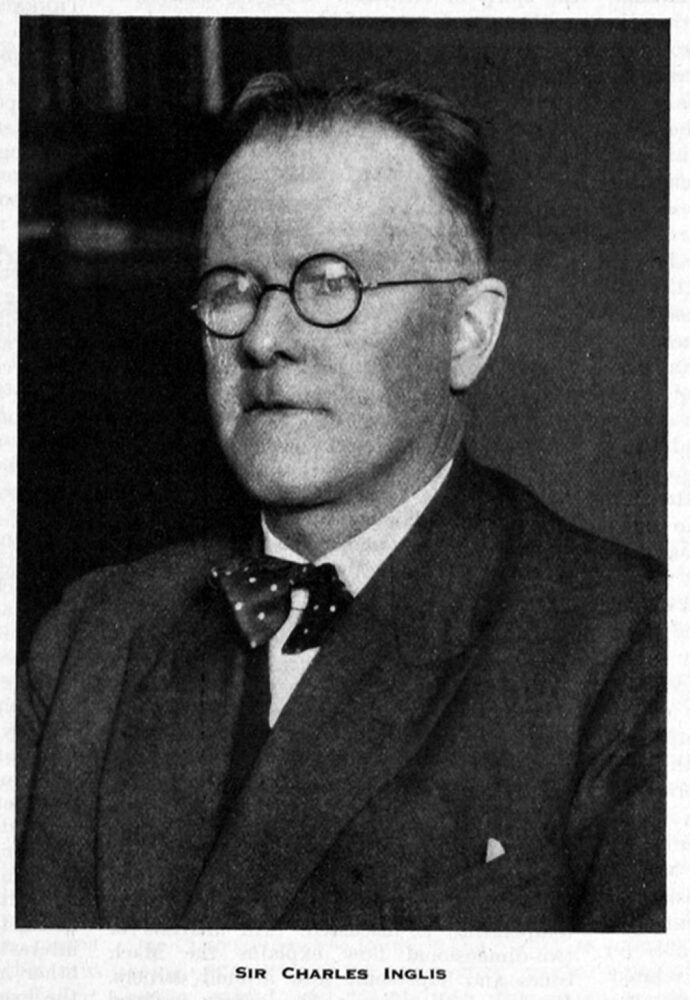
After an extended and distinguished educational profession, he was because of retire in 1940 however the Second World Warfare noticed curiosity in his bridge designs rekindled and he was concerned in navy bridging for a second time.
Charles Inglis was knighted in 1945 and died on the first of April 1952, eighteen after his spouse.
Learn his obituary right here
The Inglis Constructing at Cambridge College is proven under.
The Inglis Army Bridge (Numerous Designations)
Within the early 1900s, the British Military was experimenting with prefabricated transportable bridges, the 1912 Bangalore Girder Bridge being instance.
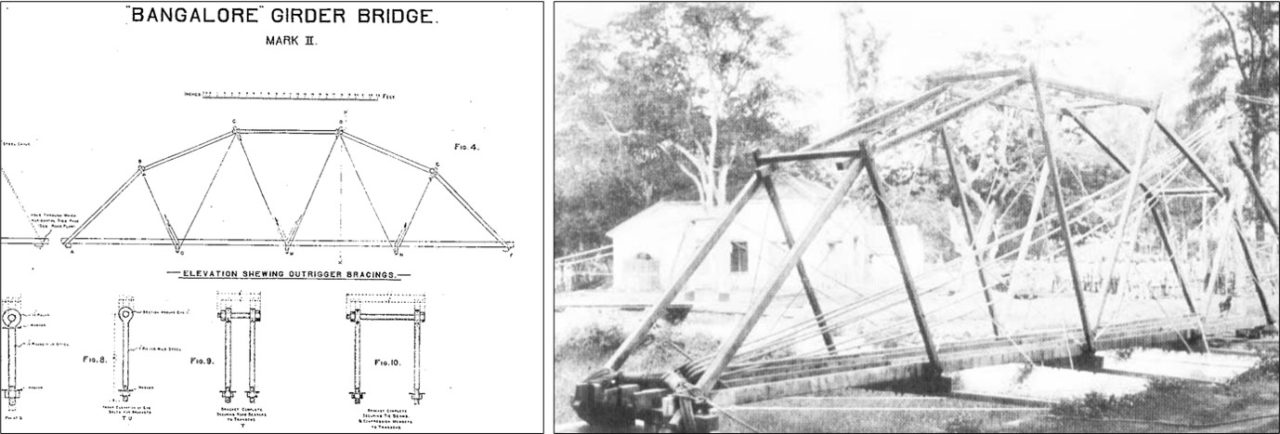
This design was produced by Main R.L. McClintock of Queen Victoria’s Personal Sapper and Miners in India. Regardless of this, the norm was for heavy girder bridges to be fabricated on-site and swung out utilizing a bridging derrick.

With the onset of WWI, a lot better was wanted.
Inglis Transportable Army Bridge – Mild Sort
The primary Inglis bridge stemmed from work carried out in 1913 on an infantry bridge.
His obituary mentions this early interval;
He had been an officer within the College O.T.C., and had observed how on area days the engineering part needed to stand about for hours with nothing to do. So he designed a bridge which they might put up and takedown in the midst of a day. An inspecting officer observed it, and stated, ‘When you’re making something for the military, maintain it easy – no sophisticated devices
Formally referred to as the Inglis Transportable Army Bridge – Mild Sort it was generally called the Inglis Pyramid Bridge.
As may be seen from the diagram under, the Warren trusses have been angled in and secured with a single tubular high chord positioned in compression.
The underside tubes have been in stress and various trusses supported the only gangway.

Though the transoms have been heavy at 198 kilos (90 kilograms) every, the strain tubes have been very mild (much like scaffold tubes) and this, coupled with the straightforward building method, enabled a 108-foot-long bridge to be accomplished in lower than quarter-hour.
Initially meant just for infantry and capable of carry single-file infantry over a 96-foot span.
A two-wheel trolley was used to help in building with the bridge being initially constructed parallel to the hole. As soon as full the bridge was swung over the hole with the development staff offering the cantilevered weight.
10 units have been ordered to be used in France.
It was additionally attainable to hold 3-ton automobiles by holding the centres lower than 16 ft aside and mixing two bridge units.

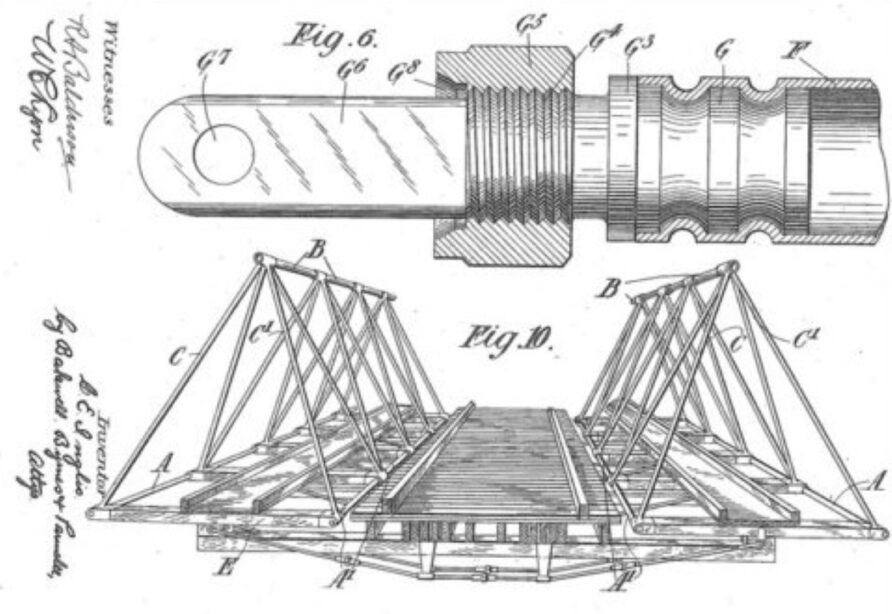
The primary demonstration in France noticed the Military Service Corps span a 108ft hole in 13 minutes utilizing an Inglis Mild Sort.

A truncated pyramid design model was proposed however by no means produced.

Inglis Transportable Army Bridge – Heavy Sort
Quickly after, the BEF requested a modified design that would carry first-line transport automobiles as much as 7 tons over a 96-foot hole.
Inglis responded by designing the Inglis Transportable Army Bridge – Heavy Sort, generally described because the ‘Second Sample’
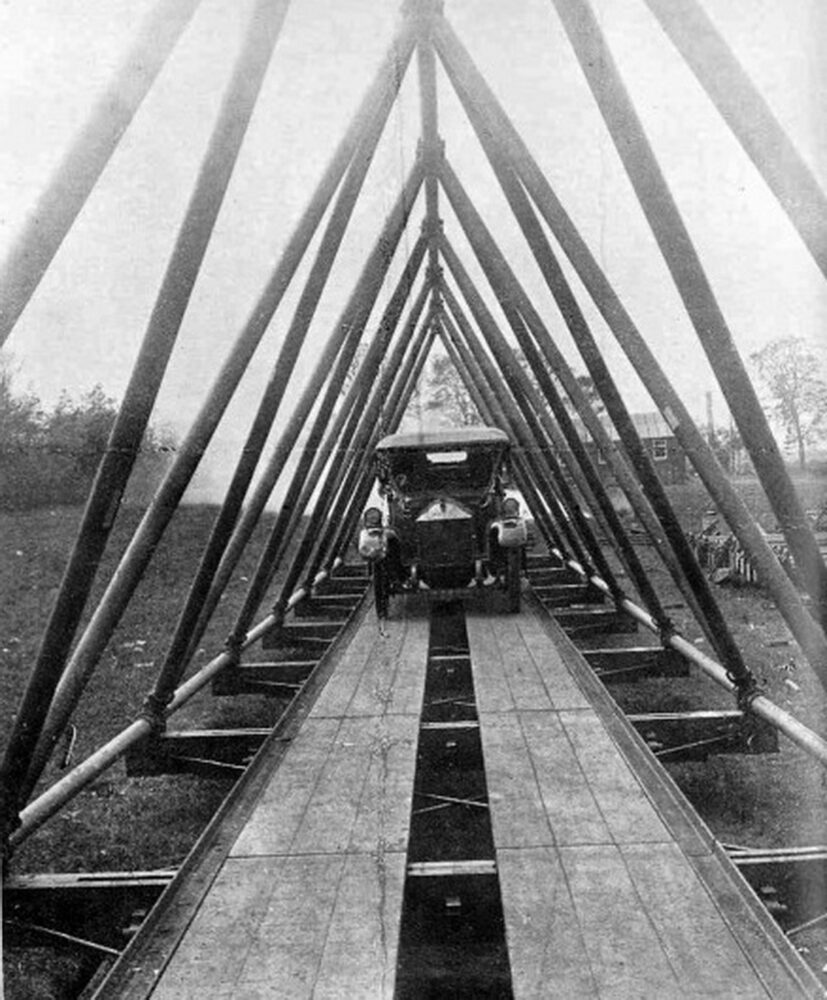
As an alternative of 8-foot tubes, the Heavy Sort used 12-foot tubes and will carry masses as much as 7 tons over a span of 96 ft.
The tubes have been fabricated on the Spherical Oak Steelworks in Brierley Hill, West Midlands which is now the location of the Merry Hill Buying Centre, and the nook castings on the Kryn and Lahy Metal Founder and Engineers website in Letchworth.

Seventeen Heavy Sort Inglis Bridges have been ordered and delivered to France in 1916 though they didn’t see widespread use as a result of the triangular building meant tall automobiles couldn’t site visitors the bridge.
There’s little or no video footage of this bridge, maybe this being the one one, at 5 minutes in, it exhibits the development and launch sequence, particularly the swing trolley
Survivors and Replicas
There is just one authentic Inglis Pyramid Bridge left anyplace on the planet and it’s within the UK (to my data).
An Inglis Transportable Army Bridge (Mild Sort) with pyramidal building is located in Aldershot, simply off Laffan’s Highway close to Browning Barracks.
Laffan, after all, is acquainted to any Sapper within the Hurrah for the CRE music, a former CRE.
In WWII, Malta Barracks was on the sting of Laffan’s Highway on the sting of Watts Frequent and was used for Royal Engineer coaching in addition to the close by Hawley Lake. The bridge itself is between the Claycart and Farnborough Highway bridges (see the Google map at this hyperlink).
It’s used as pipe help though I’m not certain what the pipe carries.
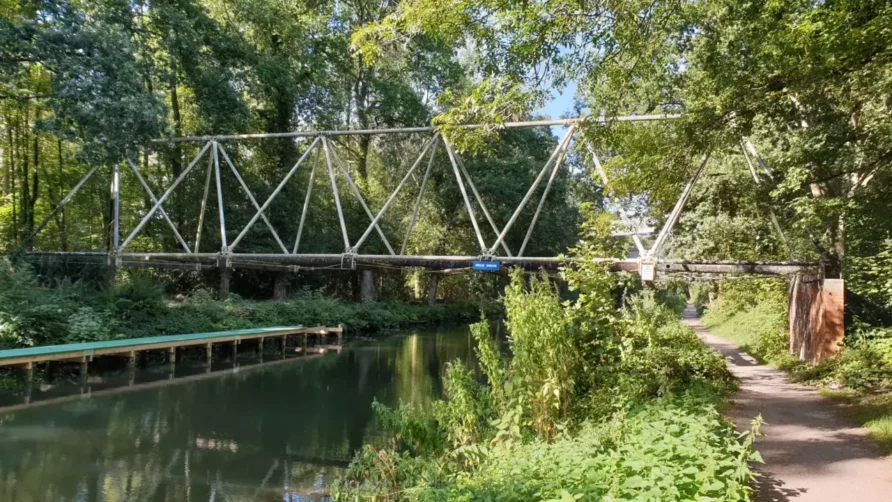
This marvellous and historic piece of the nation’s navy engineering heritage sits there alone and is basically unknown, though the Basingstoke Canal Society does have some info on it and the Tablet Field Research Group has documented a close-by pillbox (funnily sufficient!)
The picture under exhibits good element of the junction field and the way it was used to attach the tie rods and timber transoms.

To commemorate males misplaced from the realm through the First World Warfare, South Ribble Borough Council commissioned DP Studios to recreate an Inglis Heavy Sort Bridge to be used of their Central Parks space
A couple of days earlier noticed the revealing of the continuation of the memorial space. The Inglis bridge erected over the River Lostock (or dandy brook) relies on a World Warfare 1 design. In earlier conflicts, rivers have been spanned utilizing boats and timber beams lashed collectively to type pontoons. Though a lot of the Nice Warfare was fought from the trenches, when the order got here to advance, velocity of motion grew to become the important thing to success. A brand new kind of bridge was wanted. A modular bridge which was mild and transportable. Charles Inglis had already thought-about the problem and had a design able to go. Within the area the bridge was used to help entrance line troops. The sappers have been typically referred to as upon to construct bridges while beneath hearth. The fast deployment of the Inglis Bridge helped to scale back the casualties. Because the preventing moved ahead the sappers would erect a extra everlasting construction whereupon the Inglis Bridge can be dismantled and transferred ahead to help the following offensive. The brand new bridge relies on the model developed by Charles Inglis throughout 1915 and known as the ‘Heavy Sort. Each effort has been made to recreate the bridge as carefully as attainable to the unique. Nevertheless, for security causes, the next design modifications have been launched; the timber transoms (giant members throughout the bottom) are changed with metal, metal decking is put in and security obstacles added. The bridge is fastened and can’t be disassembled.
Photographs from the bridge
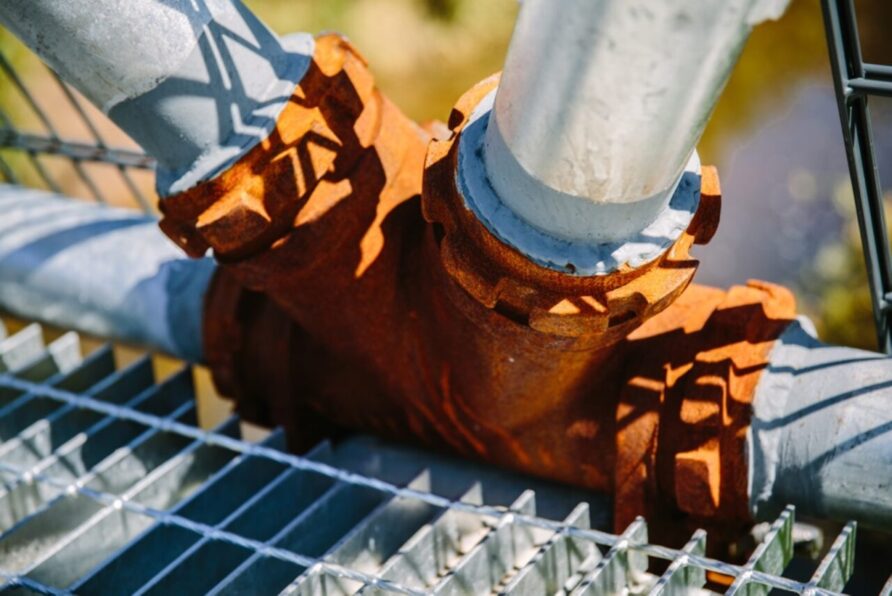


See it on Google Maps right here
The Inglis Bridge Mark I and Mark II
With the emergence of the tank, it was clear that the prevailing inventory spans and transportable bridges can be unable to hold them, a brand new bridge was wanted. By now liable for all navy bridging within the British Expeditionary Drive, Charles Inglis was tasked by the Engineer in Chief to design an improved tubular bridge to hold heavier masses as typified by early tanks.
The resultant design took the tubular building from the sooner Inglis pyramid bridges however used a extra sensible design with a light-weight pierced metal high internet.
The junction packing containers have been nonetheless forged iron and so they used the identical tubes as earlier designs however the transom was of an analogous design to the highest internet, pierced metal, not timber.

Mark I Inglis Bridge is usually referred to as the ‘rectangular kind’ given the peak to the highest of the truss is longer than the bottom.

The Inglis Mark I used to be capable of site visitors Class A masses (17-ton axle load) over gaps as much as 96 ft vast utilizing a 12-foot bay.
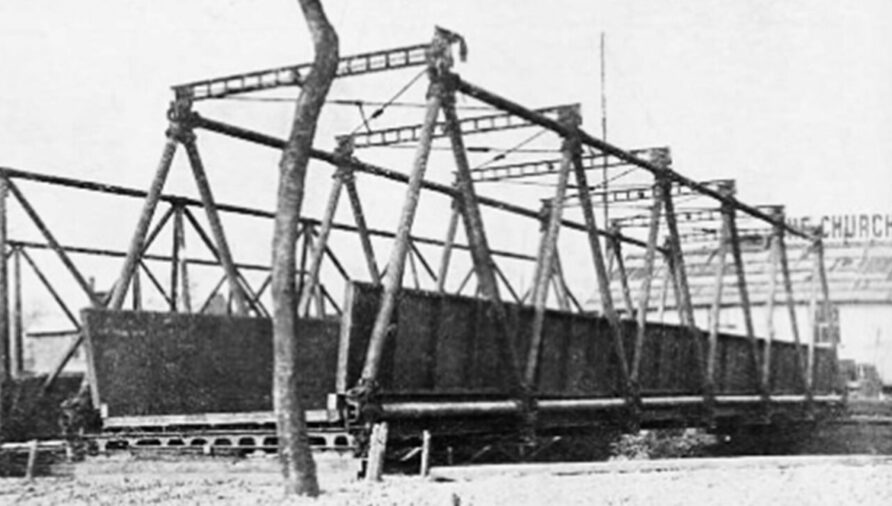
The picture under exhibits an 84-foot MkI in use at la Motte in France, in April 1918.

Canada within the Nice Warfare offers a wonderful description of the construct course of;
A lot of standard-span transportable bridges, various in span from sixteen to eighty-five ft, have been saved on the base depots. These bridges consisted of unfastened members and have been bolted with machine-turned bolts. They have been, nonetheless, very cumbersome, and this rendered their erection gradual. The burden was one other drawback, e.g. the eighty-five-foot span was a single-way bridge and weighed sixty-three tons. Fortuitously a brand new bridge, referred to as the “Inglis Transportable Army Bridge, Rectangular Sort,” had been invented by Captain Inglis, R.E., and was adopted by the British Military. This bridge was the Warren girder kind and was composed of various similar bays, every twelve ft lengthy, twelve ft excessive, and twelve ft vast. It was designed to hold a useless load of eighty-four tons distributed over a transparent span of eighty-four ft. Every half could possibly be simply manhandled and the span may differ in multiples of twelve ft, e.g. sixty ft, seventy-two ft, eighty 4 ft, ninety- six ft, and 100 and eight ft, to go well with the hole. The bridge was constructed on blocks in skeleton type with a counterbalance arm and jacked up on to a two-wheeled trolley. It was then pushed over the hole, the counterbalance eliminated, then jacked down on the abutment, and the decking laid.
From the identical Canadian journal as above;
On the twenty eighth of September, 1918, a bridge of this sort was erected full over the Canal du Nord at Marquion in twelve and a half hours precise working time beneath extreme shell-fire. A celebration of roughly 200 sappers was employed on the development of the bridge with the mandatory approaches and abutments. The span was 100 and eight ft clear and the secure distributed load fifty-one tons.
And here’s a image of them doing simply that on the Canal du Nord in 1918
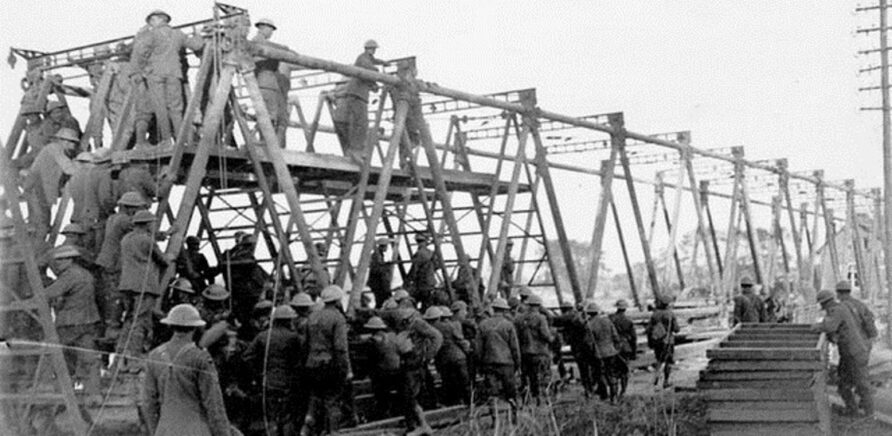
After arriving in late 1917 it was broadly used within the remaining advance in 1918.

Though a giant step up in load-carrying from earlier designs the unequal tube lengths may trigger confusion throughout evening builds and the brand new heavy tanks have been nonetheless too heavy for it.
By the tip of the Warfare, the Inglis Bridge Mark II was beneath trial, basically a strengthened Mark I with 15-foot bays.
A key enchancment was a return to identical-length tubes and a deeper transom.
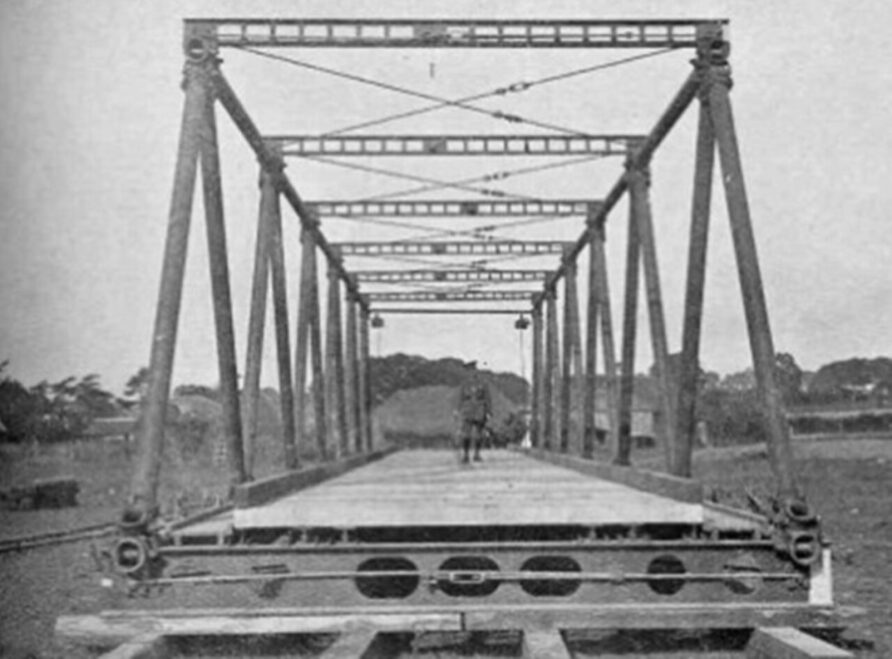
The Mk II (Strengthened Sort) may carry a 35-ton Mark V** tank over a 105ft span, it was additionally typically referred to as the ‘Sq. Sort’

An Inglis Mark II was used to span the Jordan River in Palestine, this being referred to as the Allenby Bridge
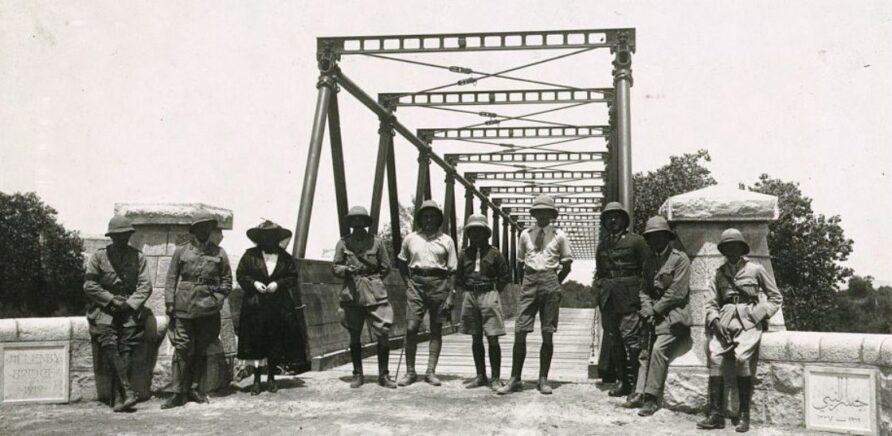
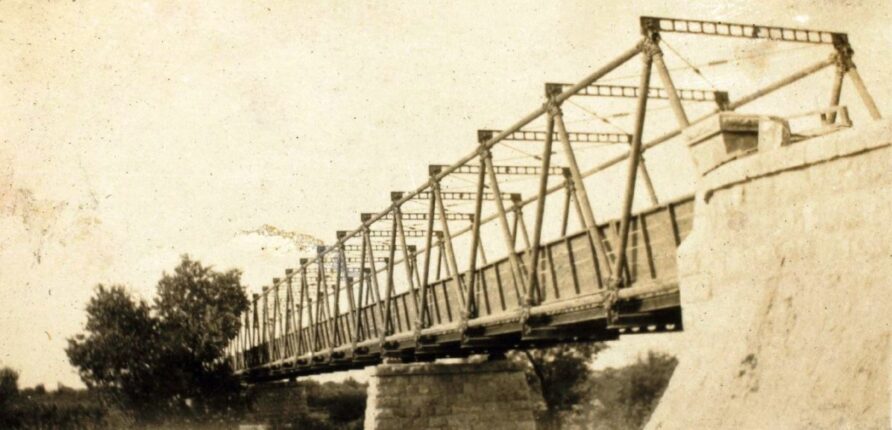
The Inglis Bridge was no doubt the very best navy bridge of the time with brief building instances and excessive carrying capability however due to its tubular metal building, was costly, and was unable to site visitors the frequent motor busses of the time.
Because the warfare entered its remaining levels it grew to become ever clearer that the fast bridging of tank obstacles and rivers/canals can be a significant aspect of armoured warfare and so in October 1918, three Royal Engineer Tank Bridging Battalions have been fashioned, the primary Royal Engineers armoured functionality and the primary on the planet.
Every battalion was outfitted with twelve Inglis Mk II (Strengthened) Bridges and various Heavy Pontoons. Every would even have 48 tanks outfitted with the 21-foot Canal Lock Bridge.
The Canal Lock Bridge was additionally designed by Charles Inglis, aided by Main Giffard Le Quesne Martel.

Quickly after the Armistice, two of three Tank Bridging Battalions had been disbanded however the remaining one was reformed beneath Martel to turn into the Experimental Bridging Firm Royal Engineers at Christchurch
After the Nice Warfare, the Inglis Mk II continued for use and developed into assault and floating bridges.
The Inglis Assault Bridge was a 135-foot-long span with a pair of loafer tracks. The idea referred to as for the Royal Engineers Tank to make use of its jib to push the assembled bridge over the hole.
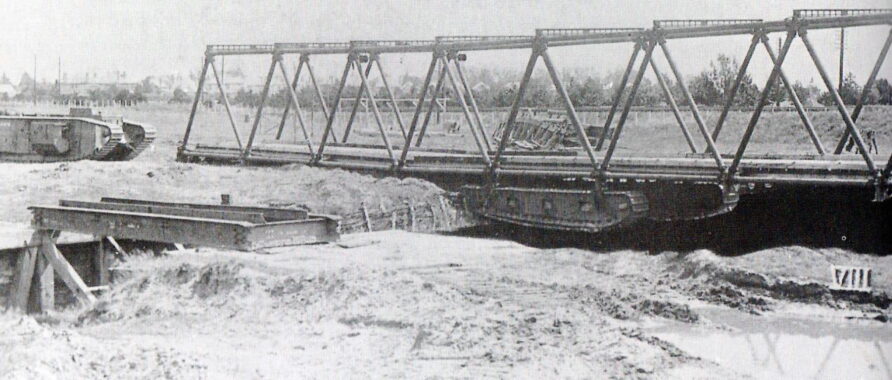
In lower than a minute a 70-foot hole could possibly be bridged with out exposing any particular person to fireplace, the primary true assault bridge to make use of a bridge of considerable size, over the usual 21-foot Canal Lock assault bridges of the time.
With the demise of the RE Tank (a modified Mark V** proven under), the Inglis Mk II Assault Bridge was not introduced into service however the expertise would inform later assault bridge designs.
Using the Inglis Mark I and Mark II in floating bridge preparations was additionally trialled within the instant post-war years.

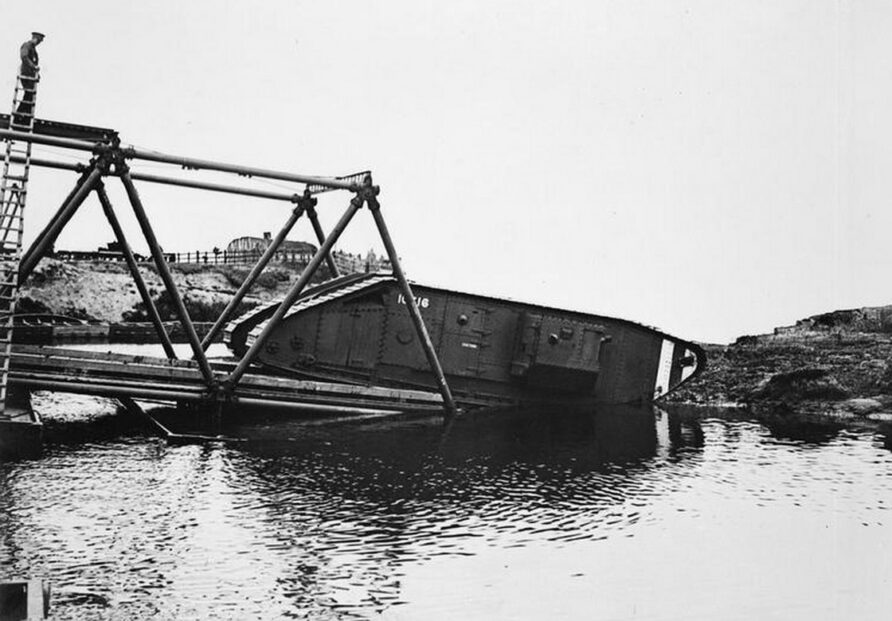

The Imperial Warfare Museum has a web based video of the Inglis pontoon and assault bridging at Christchurch in 1918, click on the hyperlink under
https://www.iwm.org.uk/collections/merchandise/object/1060000186
Inglis bridges have been used all through the empire, this one in Waziristan in 1919, for instance.

After leaving the Military and returning to Cambridge after the warfare Charles Inglis continued his shut affiliation with navy bridging, designing the Inglis Heavy Floating Bridge for instance.
By the early thirties, the Inglis Mark I and Mark II have been out of service though they continued for use for coaching and growth and occasional use outdoors the UK such because the Mk I Bara Bridge within the Peshawar District India, close to Bara Fort, in 1930.
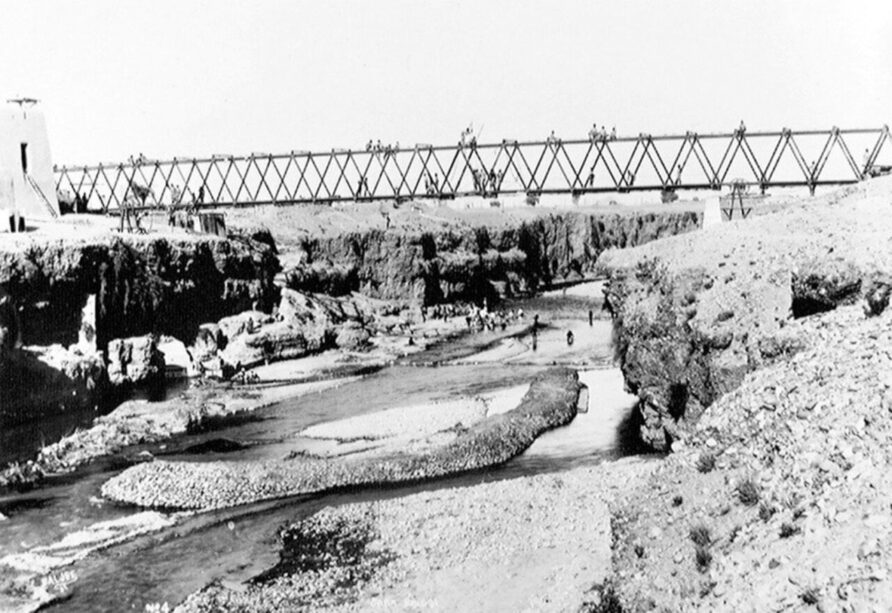
The Mk I Inglis Bara Bridge was dismantled in 1933 because it had been outdated by a everlasting concrete design (which may be seen within the background of the photographs under)
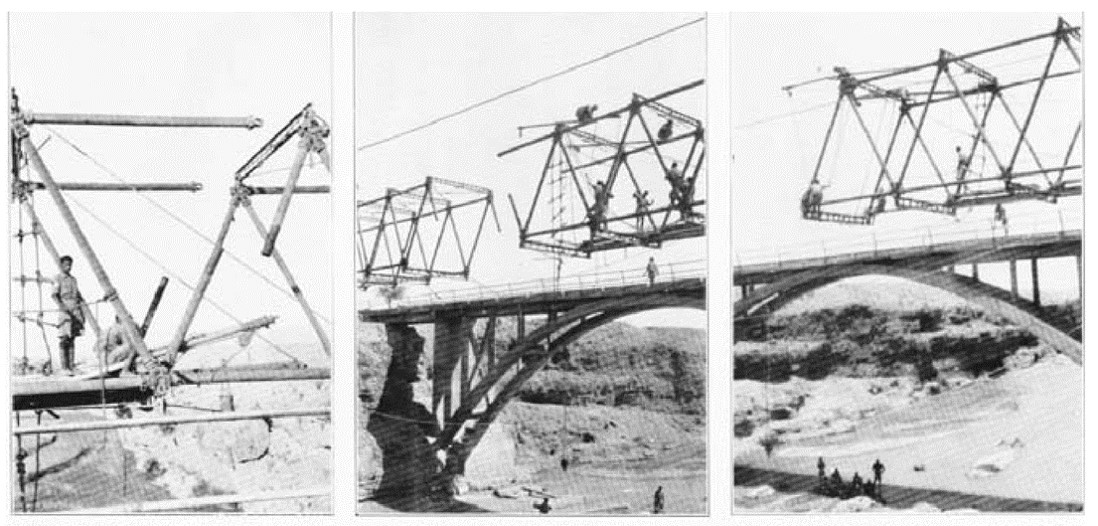
From the Nationwide Military Museum
The ‘Inglis’ sample bridge, named after its inventor, Lieutenant later Professor Sir, Charles Inglis, (1875-1952) was constructed throughout the Bara River by No. 4 Subject Firm, King George’s Personal Bengal Sappers and Miners. The specs required that it’s able to carrying infantry in fours or 10-ton steam rollers, one by one. Work started on 29 October 1930 and the bridge was open for site visitors on 23 November. {Photograph} from an album compiled by C G S Clarke, 1st King George’s Personal Bengal Sappers and Miners, 1930-1931.
The Inglis MkII was nonetheless in service on the outbreak of the Second World Warfare and regardless of the existence of the Massive and Small Field Girder bridges, the Inglis was retained as a result of it was so versatile.
The Mark II did have one final hurrah because the Inglis Cellular Bridge though, after intensive testing, it was not purchased totally into service.
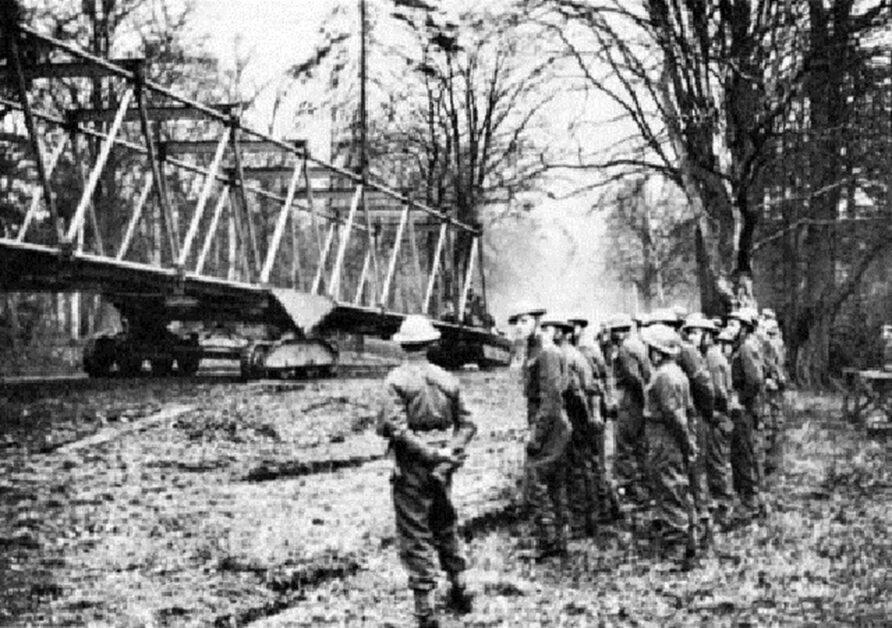
Throughout this era, Charles Inglis additionally designed an improved crane system for constructing his bridges and a trestle for pontoon or floating bridges.

Survivors
There are nonetheless a small variety of Inglis Mk I and II in existence.
An Inglis Mark II bridge is in Monmouth over the River Monnow, it was in-built 1931 to exchange an previous wood bridge referred to as the White Bridge that was in-built 1905.
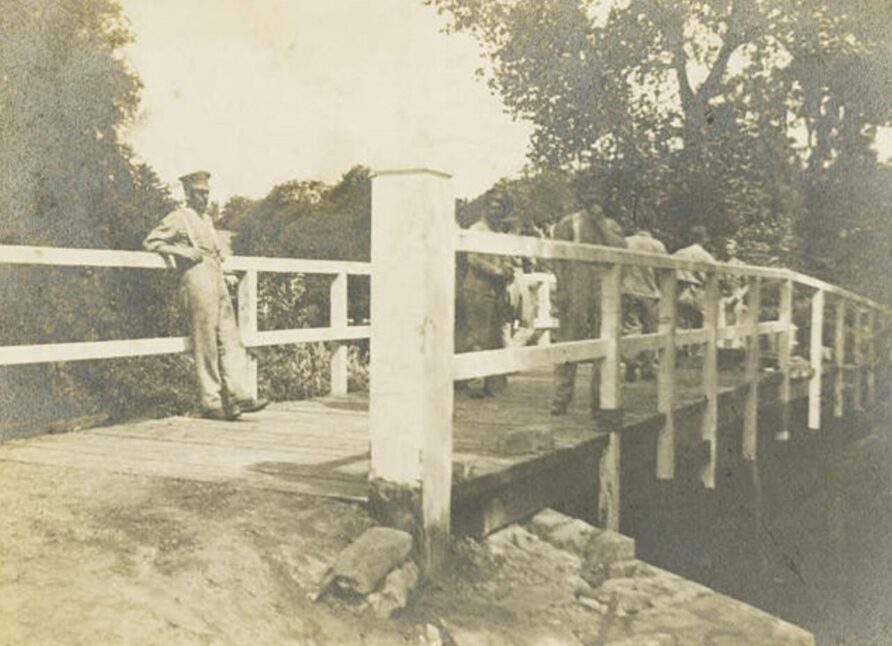

See the bridge on Google Maps right here
Lately closed to automobile site visitors it was maintained by the MoD as a result of it marked the doorway to the headquarters of the Royal Monmouthshire Royal Engineers (Militia) at Vauxhall Subject.
The Royal Fee on the Historic and Historic Monuments of Wales has a small picture gallery for the Inglis Bridge at Monmouth, and it’s a Grade II Listed construction, the listed report describes its significance.
Army bridge. Erected by the Royal Monmouthshire Royal Engineers in 1931 and refurbished by the identical regiment in 1998. Related to the navy camp at Vauxhall.
Adjoining interpretation panel was erected by the Institute of Civil Engineers in 2008 to commemorate the centenary of the founding of the Territorial Military. The First World Warfare led to the fast growth of all types of navy bridging. Professor Sir Charles Inglis served as an officer within the Royal Engineers through the First World Warfare and invented a light-weight, transportable and reusable metal bridge.
Designed for fast erection and deployment in fight situations, it has prefabricated part elements and could possibly be simply assembled in multiples of 15ft lengthy sectional bays as much as a most of 90ft in size with the minimal of mechanical help.
Mark II Inglis bridge utilising masonry abutments of an earlier wood bridge. The Inglis bridge measures 90ft in size and includes a single span and sq. part construction, fashioned from parallel longitudinal stringers, transoms, 9ft 6in vast wood deck and higher and decrease lateral bracing. The perimeters are constructed from equal-length tubular sections which are pinned into solid sockets to create a Warren Girder by way of truss bridge.
Listed for its particular historic curiosity as a really uncommon instance of an extant Inglis bridge and the one one recognized to be nonetheless in public use. Full and with little or no subsequent alteration, it represents an vital stage within the design and growth of momentary navy bridging. A pioneering design in its personal proper, it was the precursor and inspiration for the better-known Bailey Bridge of the Second World Warfare.
This could be the one MkII in existence outdoors of a museum.
The Inglis Bridge Mark III
On the outbreak of WWII, the Royal Engineers discovered themselves, like a lot of the British Military, with out enough tools for contemporary cellular armoured warfare and a widespread design effort was initiated.
Charles Inglis advised a redesigned Mark II Inglis Bridge.
The Mark III Inglis Bridge was similar to the Mark II however allowed the tubular trusses to be doubled or tripled up utilizing a redesigned junction field.

With three trusses, the bridge was designed for Class 24 masses.

Through the use of a number of trusses the bridge would offer Sappers with the pliability to keep away from overbuilding.
Reverting to the 12-bay size of the Mk 1 meant the peak of every truss was such that the Mk II high beams and sway bracing wouldn’t be attainable if in-service automobiles have been to site visitors it.
Because it was developed some disagreement between Inglis and the EBE over take a look at strategies resulted in a take a look at failure on twenty third January 1941.
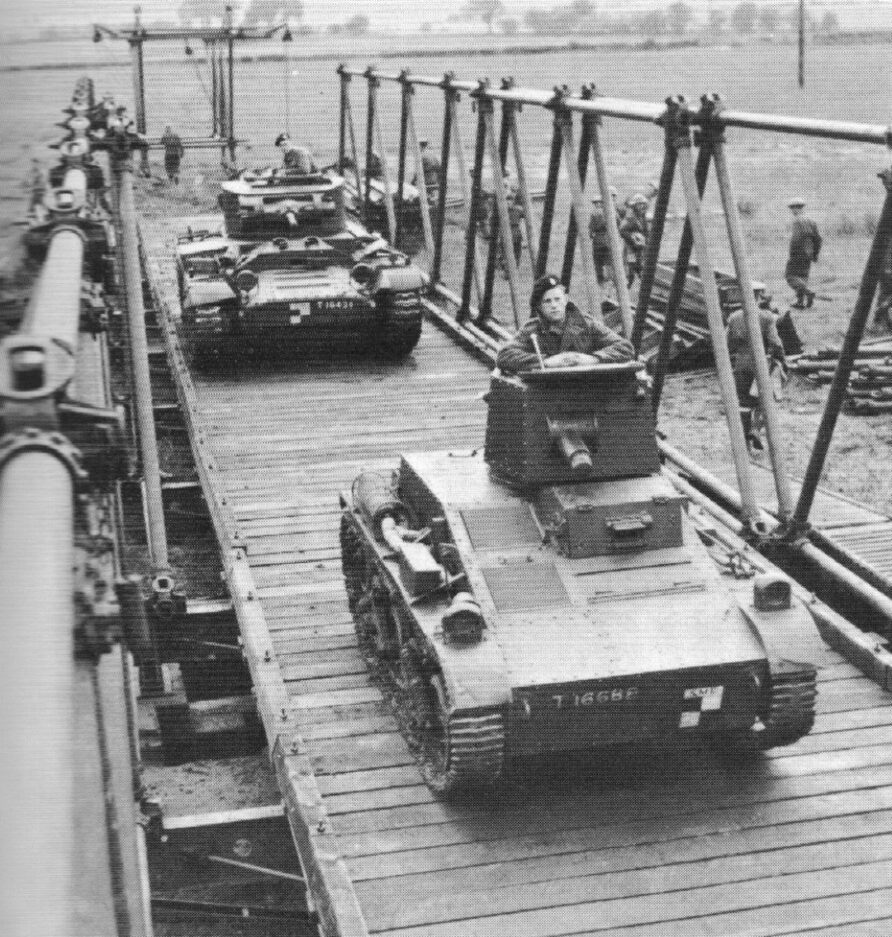
An order for 100 120-foot units had already been positioned so a fast answer was wanted.
Overhead bracing was out of the query so the answer proposed and accepted was so as to add a footwalk bracket to every finish of the transom, proven within the picture under.
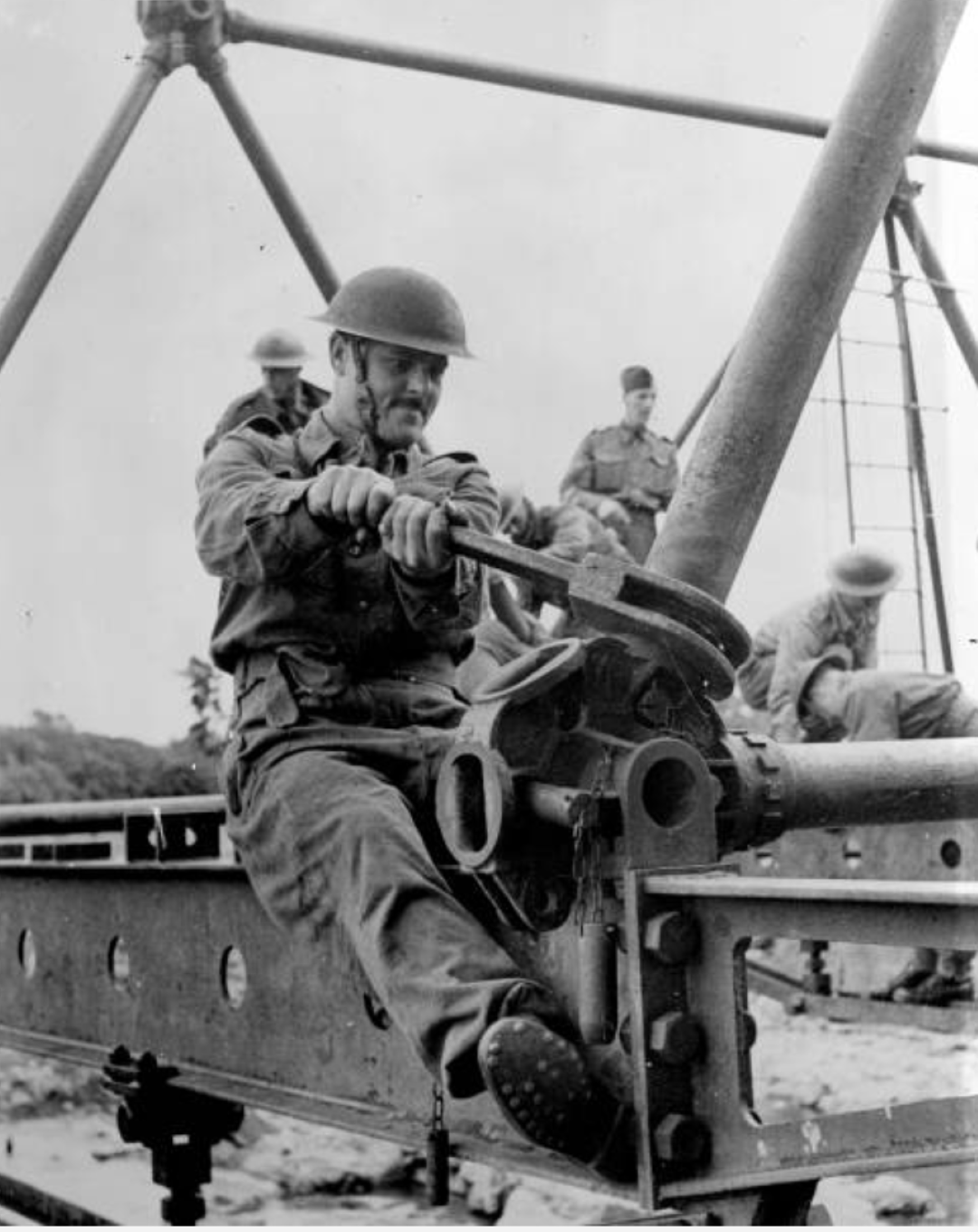
A stronger transom was additionally used, notice the smaller round holes than these used within the Mk II
Diagonal bracing from the footwalk bracket to the highest of every truss offered the required power.

The picture under exhibits the bracing and footwalk brackets on the triple truss configuration mannequin.
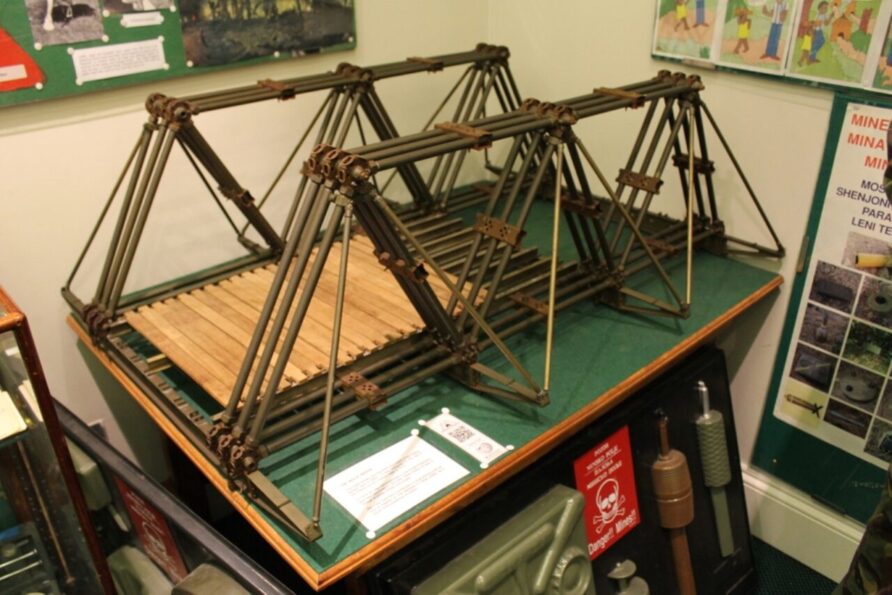
Though the Mk III was an efficient design it was nonetheless costly and was quickly eclipsed by the Bailey Bridge.
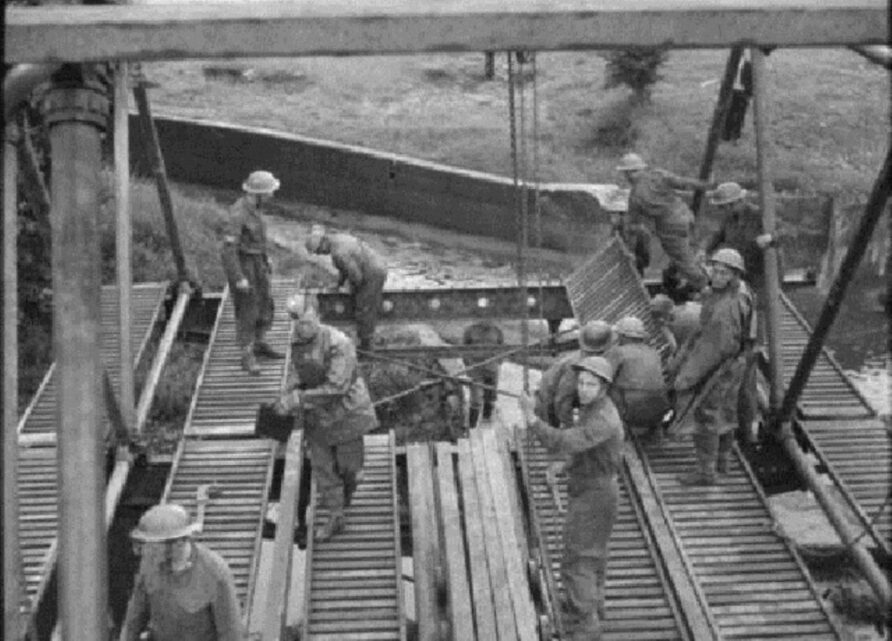
Survivors
There are a variety of Mk IIIs nonetheless in existence.
A while in the past I obtained an electronic mail from Derek on the RE Museum (one other fellow bridge fanatic) about their efforts to determine a bridge in Emmerich, Germany.
I’m a volunteer within the R E Museum, We obtained an e-mail inquiry from a person who lives in Emmerich, Germany asking for assist to determine an Inglis bridge that was nonetheless in use over a river referred to as The Wild. I’ve not too long ago visited the bridge and came upon it was in-built late 1945, probably by British Sappers and has now been declared a warfare monument by the German Authorities. It’s in excellent situation and is now restricted to 16 tons
And there it’s, over the Die Wild at Spiker Weg is none aside from an Inglis Mk III, click on right here to view it on Google Maps.
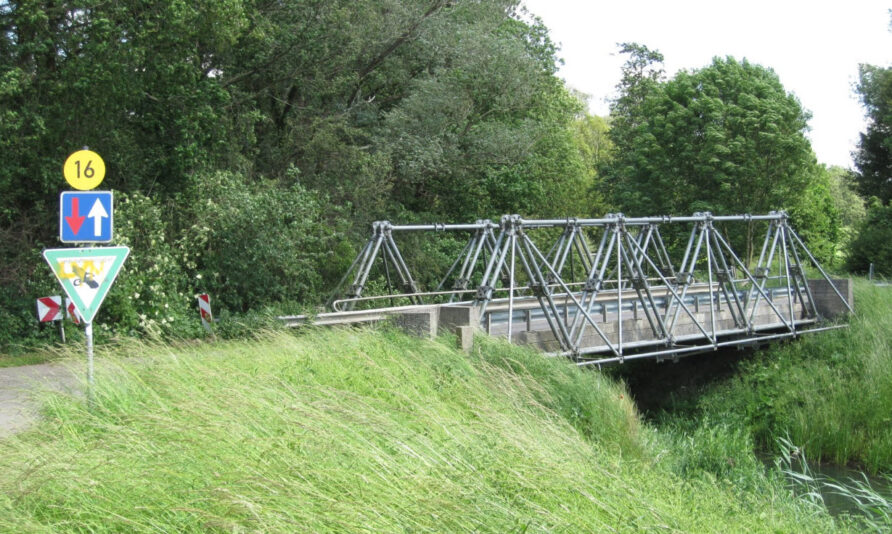
Like Monmouthshire and Basingstoke, Emmerich has an extended historical past of affiliation with the Royal Engineers so it appears becoming for the three forms of Inglis Bridge in every of these areas.
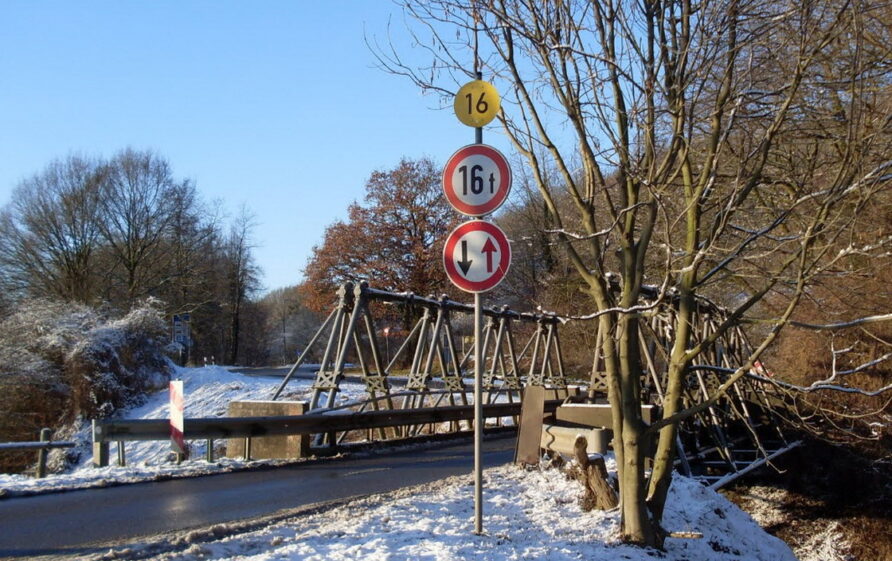
Thanks, Derek
A spot of further Google Fu reveals what seems like one other MkIII Inglis however with out the extra trusses.
This one is in New Zealand on the Simpson Area campsite erected by the Rangitikei County Council in 1985.

The Doncaster Inglis
An Inglis Bridge was not too long ago found on the former RAF Sandoft
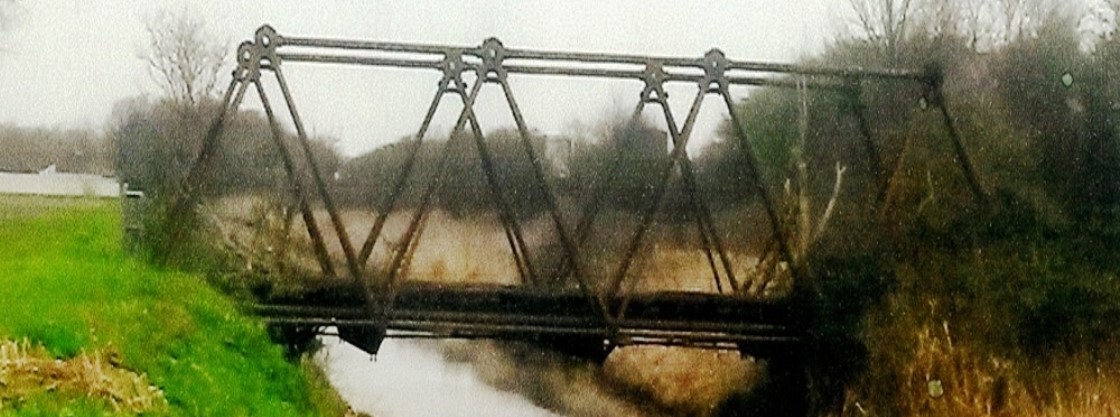
The native department of the Royal Engineers Affiliation (REA) and the Royal Engineers Museum have been enlisted to protect and transport it to the RE Museum.
The Highways Company and native Water Board gave permission and wheels set in movement to rescue this uncommon merchandise of UK navy heritage.
One of many final navy bridges put in to type entry to RAF Sandtoft, a Second World Warfare airfield, has been eliminated after it was put in someday in 1943/44.
The Inglis Bridge, which is believed to be the one recognized surviving Mark 1 model, has been faraway from over a 7m vast watercourse to the north of the M180 in South Yorkshire. The bridge which has not been used because the finish of the Second World Warfare was the accountability of Highways England and can be renovated by the Royal Engineers Affiliation on the Military base in Nottingham. A partial section of the bridge can be despatched to the Royal Engineers Museum in Gillingham, Kent when renovations are accomplished.
Highways England mission supervisor Russell Mclean stated:
“This has been an interesting mission to be concerned in. We have been approached by the Royal Engineers Affiliation earlier this yr who have been interested by renovating a section of the bridge for his or her museum. “We have been solely too blissful to assist them with their request though the elimination of the bridge did show to be troublesome because the bridge has been there for a very long time so we weren’t certain how the construction was going to carry after we eliminated it. Fortunately we have been capable of take away a big sufficient section which might now be put proudly on show within the Royal Engineers Museum in Gillingham, Kent.”
The 50 ft bridge was eliminated by a cradle that was bolted to the roadway of the construction and lifted by a 400 tonne crane. The bridge was then cut up into 2 so it could possibly be transported to the military base. Members of the Royal Engineers Affiliation have been invited to the elimination of the bridge.
Jim Johnstone of Doncaster Royal Engineers Affiliation stated:
“The members of the Doncaster Department of the Royal Engineers Affiliation have by no means been concerned in a mission of this magnitude. In collaboration with Mr James Brooke, the farmer, who kindly donated the bridge to us we really feel that we’re saving a chunk of Corps historical past that in any other case would have been misplaced. From the members of the Department we should additionally thank Highways England for the great help given within the restoration of the bridge.”
Inglis bridges have been the primary modular bridges (that could be a bridge which could possibly be constructed, used, dismantled and constructed elsewhere) offered for entry throughout rivers and gaps through the warfare as they could possibly be constructed in a brief house of time and will take a considerable amount of weight. They have been often assembled by a staff of 12 males and a turntable. A counterweight was connected to the house financial institution facet of the pre-erected construction which was then swung throughout the river to the far banking space.
Photographs from the elimination under
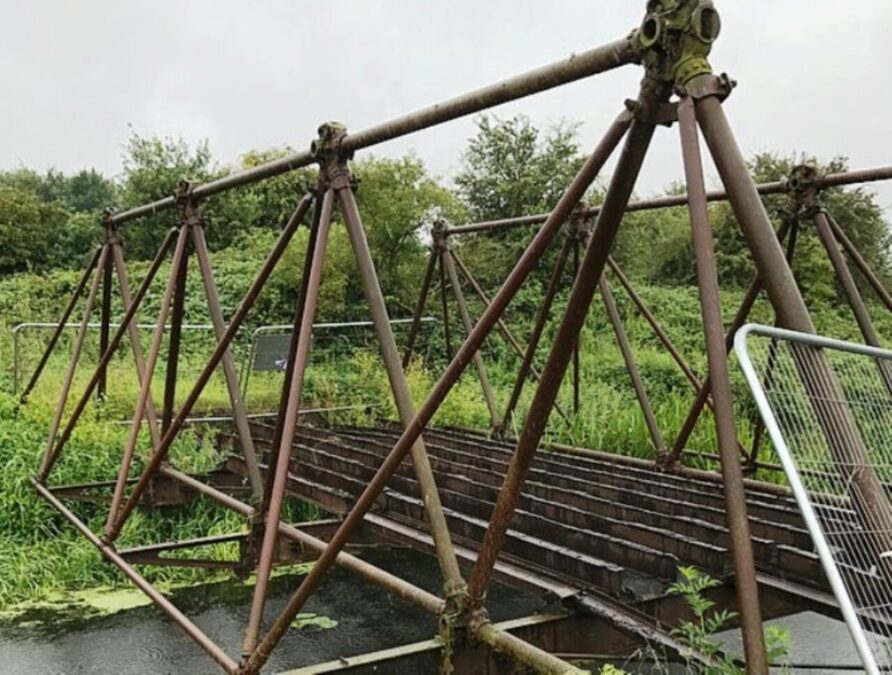
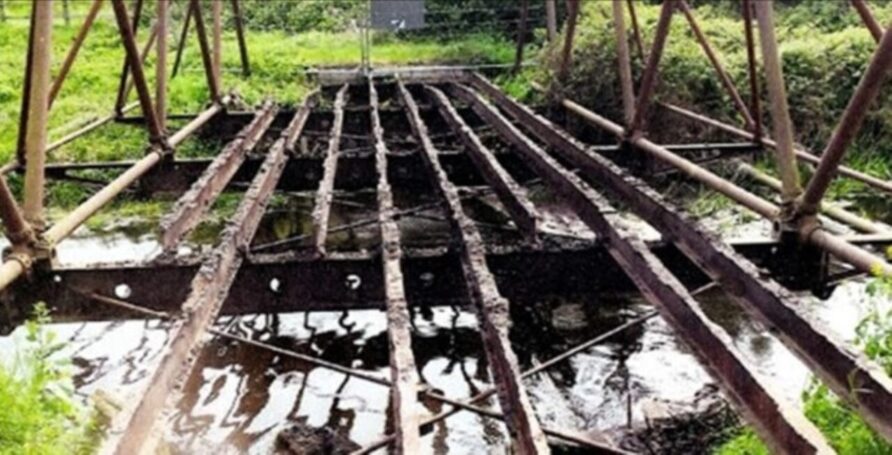
Highways England additionally reported on the mission.

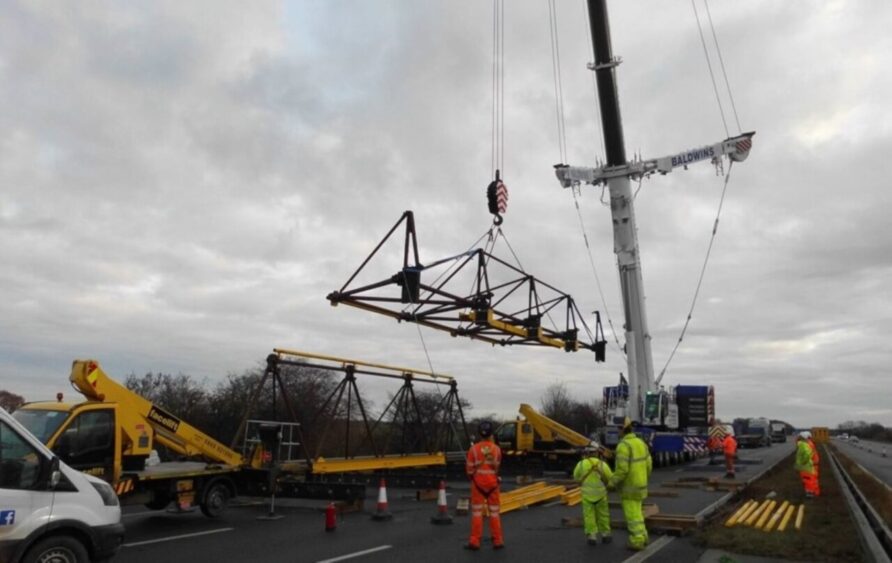
That is nice stuff, nonetheless, I do marvel if that is really a single truss Mk III, not the Mk I as reported by varied sources.
I’ve by no means seen any drawings or photographs of a MkI with the infantry footbridge and stabilising outriggers, solely an M kIII.
The picture above additionally exhibits the strengthened Mk III, the one with the small round holes.
Additionally, given the timeframe, when the bridge right here was put in, within the mid-forties, the Mk I’d have been lengthy gone, however the MkIII would have been out there, and extra importantly, surplus to necessities given the introduction of the Bailey Bridge.
I may nicely be improper, and the bridge in query could be a mixture, definitely, through the warfare, something surplus would have used.
A restored part of the Doncaster Inglis is proven under.
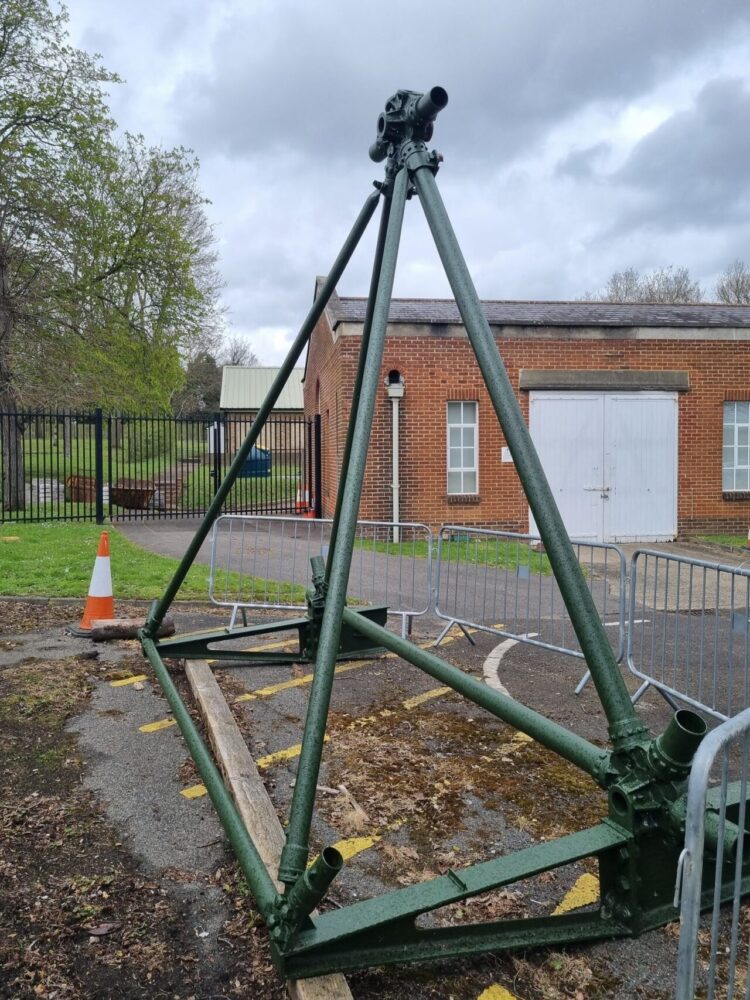
You determine!
The Bit The place I Ask A Favour
TD is a interest for me
I attempt to offer first rate content material for no price however internet hosting, software program and providers add up.
You possibly can assist me maintain the present on the street by…
Clicking an advert
Dropping a couple of quid within the Kofi jar
And even shopping for some Suppose Defence merchandise over at Pink Bubble

Thanks prematurely people, your help actually is appreciated
Change Standing
Additional info
Associated
[ad_2]
Source link




